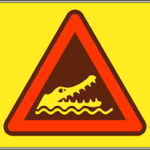
Insurance Blog
Month: July 2015
The TruePoint Billboard Challenge

Saving Water Damaged Property

Â
Salvage experts, property specialists, and government agencies advise that quick action is critical when dealing with water-damaged property. Many types of personal property can be saved within 48 hours of being exposed to water.
WarningÂ

Before trying to save property, make sure that YOU are safe. Flooded buildings can be hazardous. Make sure that there is no danger of electrocution by turning off power and avoiding fallen utility lines. Do not come in contact with water containing sewage and make sure the floor, ceiling, and wall support pose no danger.
Tips On Handling Personal Property
Photographs – Remove from plastic/paper enclosures or frames; carefully rinse with cool, clean water; DO NOT touch or blot surfaces. Air dry, hang with clips on non-image areas, or lay flat on absorbent paper. Keep photographs from contact with adjacent surfaces or each other.
Paintings – Remove from frames in a safe, dry place. Do NOT separate paintings from their stretchers. Keep paintings horizontal and paint-side up with nothing touching the surface. Avoid direct sunlight.
Books – If rinsing is necessary, hold book closed. If partially wet or damp, stand on top or bottom edge with covers opened to 90° angle; air dry. If very wet, lay flat on clean surface; interleave less than 20% of book with absorbent material; replace interleaving when damp.
Paper – Air dry flat as individual sheets or in ÂĽ” or smaller piles, with absorbent paper placed between each wet sheet (interleaving). Do not unfold or separate individual, wet sheets. Keep coated papers wet by packing in boxes lined with plastic garbage bags; freeze (maps or manuscripts), sponge water out; pack loose flat sheets in flat boxes or plywood covered with plastic sheets. If there are too many items for air drying, interleave (by groups or individually) with freezer or waxed paper; pack papers or files, standing up in sturdy containers; pack containers only 90% full and freeze.
CDs, DVDs – Remove from cases and bathe in clean distilled water, dry with lint-free towels and insert into new casing and copy.
Clothing/Fabrics – Brush off all loose, dried dirt. Rinse thoroughly in cold water as soon as possible until as much mud as possible is removed. Repeat if necessary. Do not use hot water as it sets stains from red or yellow clay. Machine wash when no more dirt can be rinsed out.
Wood Furniture – Rinse/sponge surfaces gently to clean, blot, and air dry slowly. If any painted surfaces are blistered or flaking, air dry slowly without removing dirt or moisture. Weigh down or clamp veneers in place while drying; separate weight from veneer with protective layer. (Finishes may develop white haze; treat later with wood cleaning product.)
Upholstered Furniture – If antique or VERY valuable, get professional estimate on cleaning/restoring.
Metal – Use gloves to handle, rinse/sponge and blot metal object, air dry. If object has applied finish, do not clean. Air dry; keep flaking surfaces horizontal.
Leather (including shoes) and Rawhide – Rinse/sponge with clear water to remove mud, drain and blot to remove excess water, pad with toweling or unlinked paper to maintain shape, air dry. Manipulate tanned fur skins during drying to keep skins flexible.
Baskets – Rinse, drain and blot to remove excess water, stuff with clean paper towels or cotton sheets to retain shape and absorb stains, cover with clean towels and air dry slowly, regularly changing blotting material.
Be Practical and Prioritize
Often it is impractical or impossible to try to save everything, so prioritize. Work on the property that is MOST important to you and that is most vulnerable to permanent damage. One practical consideration is to forget about fully upholstered furniture and mattresses. Such property is usually impossible to properly dry and is often contaminated.
COPYRIGHT: Insurance Publishing Plus, Inc. 2014
All rights reserved. Production or distribution, whether in whole or in part, in any form of media or language; and no matter what country, state or territory, is expressly forbidden without the written consent of Insurance Publishing Plus, Inc.
TruePoint Insurance Group, LLC
6287 Taylorsville Rd.
Fisherville, KY 40023
(888) 706-5423
TruePoint Insurance Group, LLC is not licensed to practice law, nor can it provide legal counsel. This summary is not intended as a legal opinion. We cannot warrant that the opinions and representations provided in this summary are accurate. TruePoint Insurance Group, LLC has provided this summary of the Virginia Graeme Baker Act for your awareness. The summary may or may not identify your requirements as a pool or spa owner. If you own a pool or spa you are advised by TruePoint Insurance Group, LLC to refer your specific situation to legal counsel.

 Contact
Contact
 Email an Agent
Email an Agent

 Click to Call
Click to Call Get Directions
Get Directions


